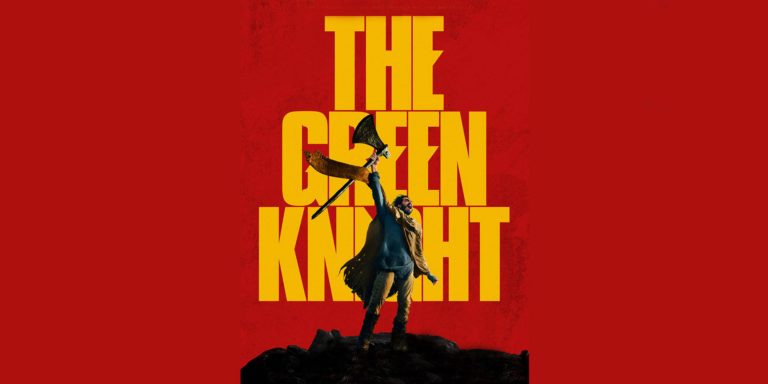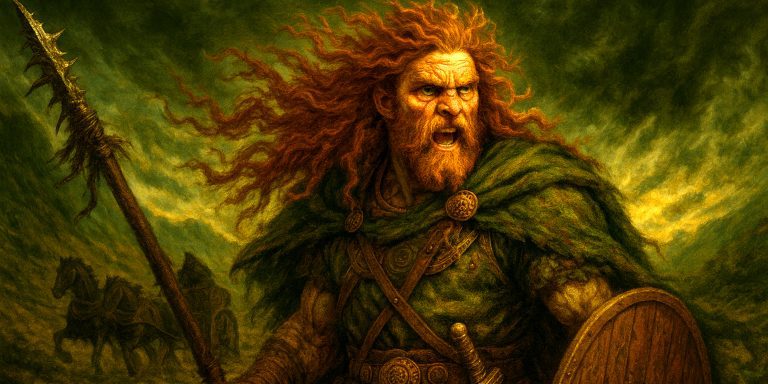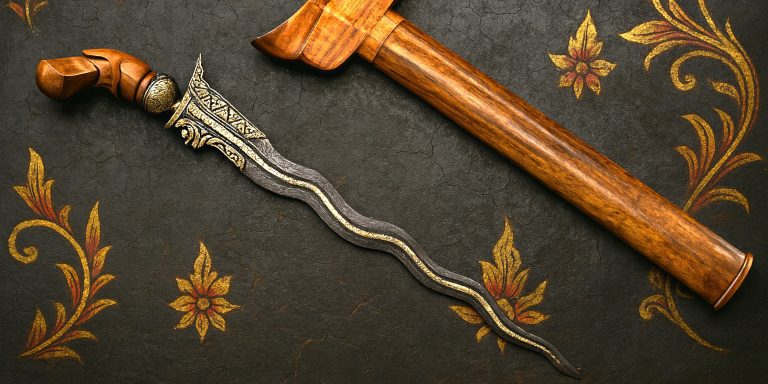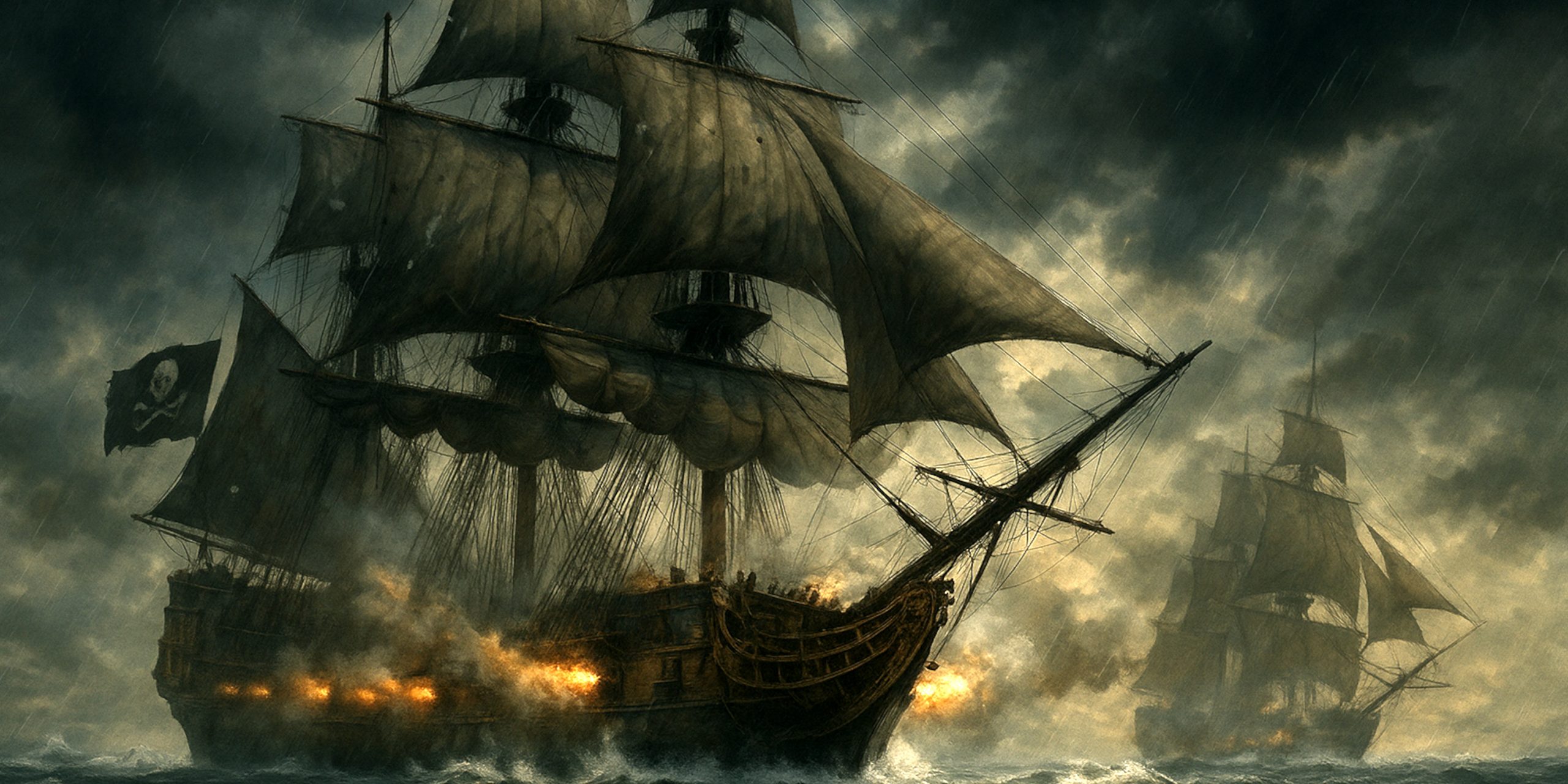
If there’s one thing that keeps the legends of piracy alive, it isn’t just the rum, the maps, or the parrots, it’s the ships. The vessels of the so-called “Golden Age of Piracy” were the engines of chaos that carved fear into trade routes and inspired a thousand tall tales. These were not sleek naval warships or lumbering merchantmen; they were fast, adaptable, and in the right hands, utterly terrifying.
From the dreaded Queen Anne’s Revenge to the elegant Royal Fortune, these ships became as infamous as the men who commanded them. Let’s haul anchor and set sail through history’s most notorious pirate ships, their stories, their weapons, their battles, and their final fates.
1. Queen Anne’s Revenge
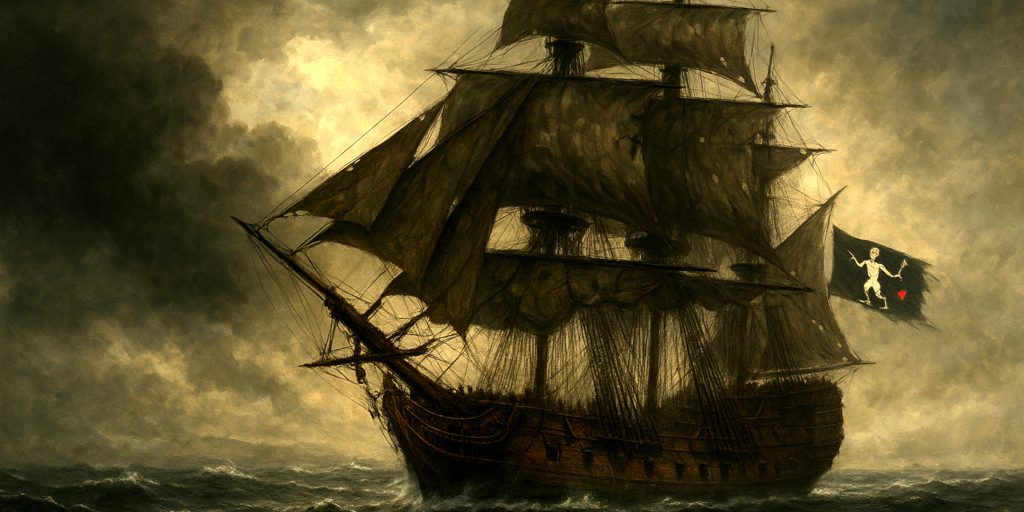
Captain: Edward Teach (Blackbeard)
Origin: Captured French slave ship (originally La Concorde)
Type: Frigate
Guns: Up to 40
Blackbeard’s flagship was as fearsome as its master. After capturing La Concorde off Martinique in 1717, Teach refitted it into the Queen Anne’s Revenge, mounting dozens of cannons and turning it into a floating fortress.
Blackbeard used the ship to blockade Charleston, South Carolina, in 1718, demanding medicine as ransom for the city’s release. A contemporary account described him as “a devil of the sea whose eyes burn like lanterns,” though that might be a touch poetic.
Battle & Fate: Shortly after his infamous blockade, Queen Anne’s Revenge ran aground near Beaufort Inlet, North Carolina. Some say it was an accident. Others claim Blackbeard deliberately grounded her to divide the loot and crew before retiring. The wreck was discovered in 1996, confirming centuries of rum-soaked legend.
2. Whydah Gally
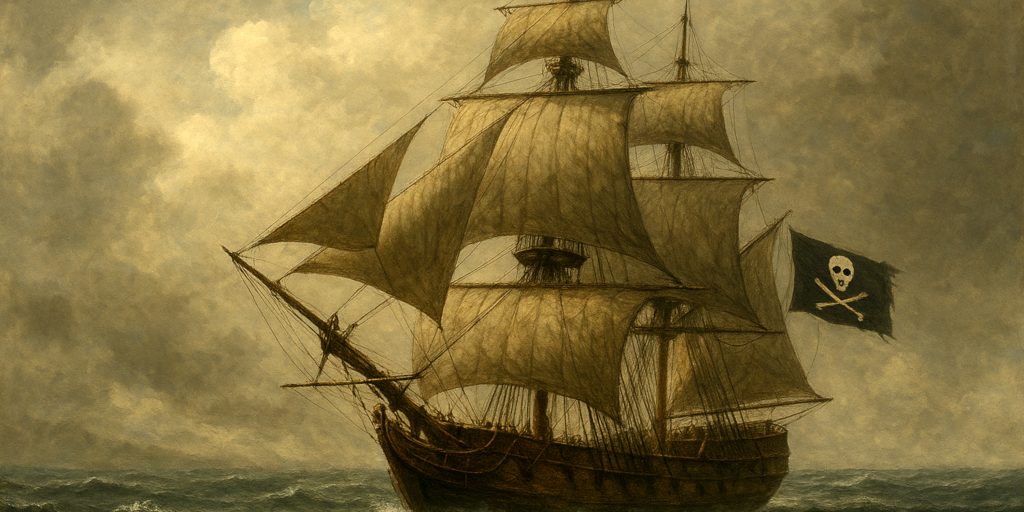
Captain: Samuel “Black Sam” Bellamy
Origin: British slave ship
Type: Galley-style ship with square rigging
Guns: 28
The Whydah was captured by Bellamy in 1717 and converted into a pirate flagship that became the envy of the Atlantic. Known as the “Robin Hood of the Sea,” Bellamy treated his crew fairly and allegedly declared, “They vilify us, the scoundrels do, when there is only this difference: they rob the poor under the cover of law, and we plunder the rich under the protection of our own courage.”
Battle & Fate: In April 1717, a violent storm off Cape Cod wrecked the Whydah. Bellamy and nearly all of his 146-man crew drowned. Centuries later, the wreck was found with cannons, gold, and a ship’s bell still bearing the name, proving Bellamy’s legend was no mere yarn.
3. Adventure Galley
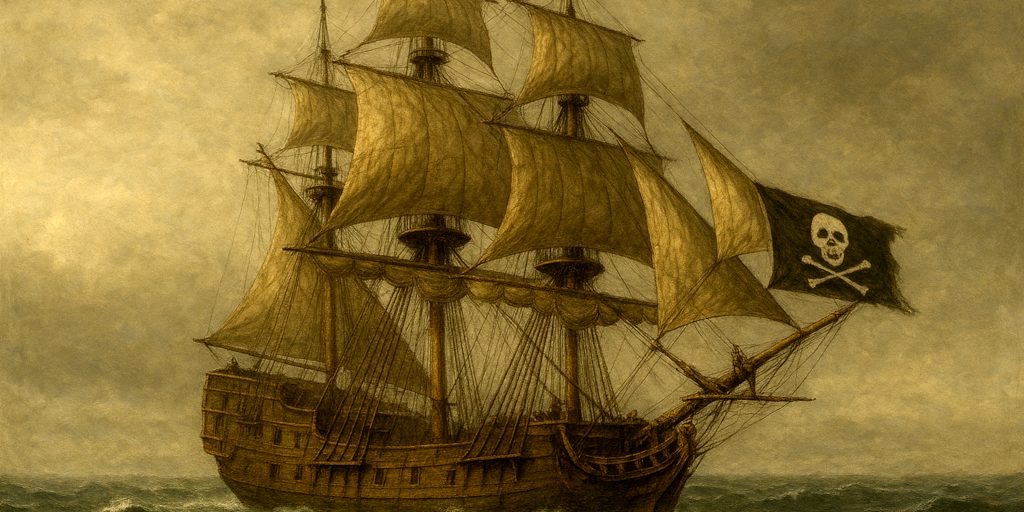
Captain: William Kidd
Origin: Built in London, 1695
Type: Hybrid sailing vessel with oars
Guns: 34
The Adventure Galley was no ordinary pirate ship, it was commissioned by the English government for privateering. Captain Kidd’s job was to hunt pirates, not become one. Unfortunately, history had other plans.
When his crew mutinied and he took prizes of dubious legality, Kidd’s reputation was sealed. The Adventure Galley combined sails and oars, giving her an advantage in calm seas.
Battle & Fate: Kidd scuttled the ship off Madagascar after it became unseaworthy in 1698. When he returned to England, he was hanged for piracy and murder, proof that even government-backed pirates can fall from grace.
4. Royal Fortune
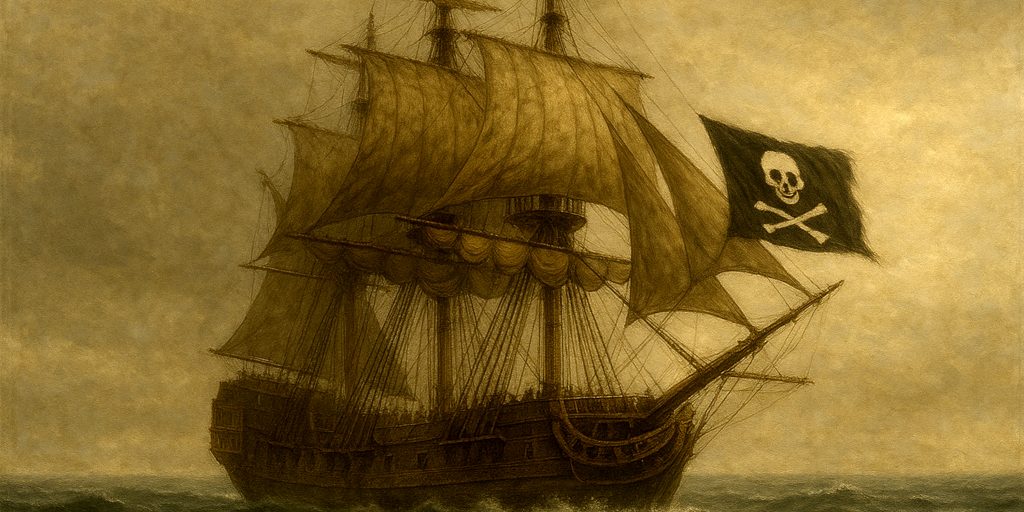
Captain: Bartholomew Roberts (Black Bart)
Origin: Several ships bore the same name under Roberts’ command
Type: Frigate
Guns: 42–50
Roberts, perhaps the most successful pirate of them all, renamed nearly every flagship Royal Fortune, a sort of darkly humorous tribute to his own audacity.
He captured more than 400 ships in a career that spanned only three years. “A merry life and a short one shall be my motto,” he allegedly declared. He meant it.
Battle & Fate: The final Royal Fortune was destroyed off Cape Lopez in 1722 after a fierce battle with HMS Swallow. Roberts was killed by grapeshot, his crew captured. His body, in keeping with his wish, was thrown overboard in full dress.
5. Fancy
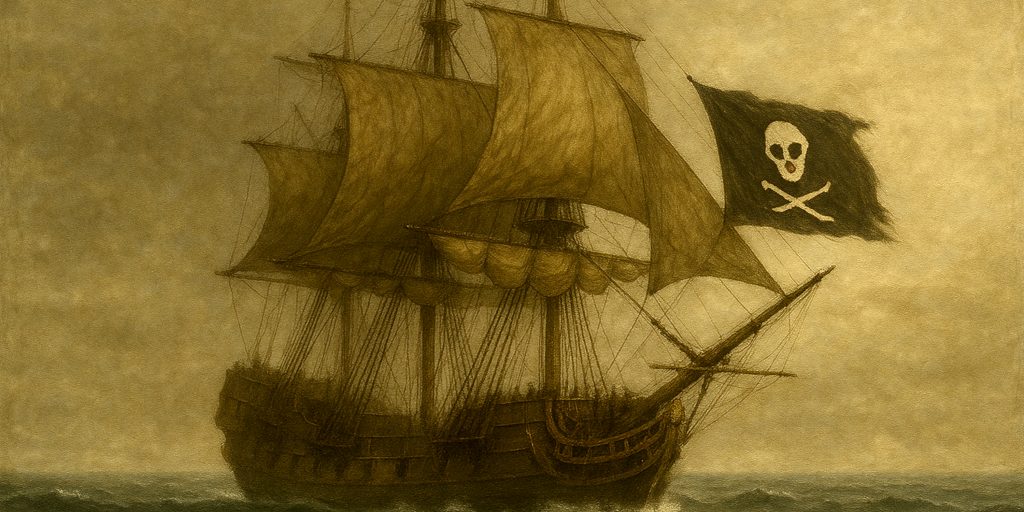
Captain: Henry Every (Avery)
Origin: English warship Charles II (mutinied and renamed)
Type: Frigate
Guns: 46
Henry Every was perhaps the most wanted man of the 1690s. His ship, the Fancy, became infamous after the capture of the Mughal treasure fleet in 1695. Every’s crew seized the Ganj-i-Sawai, one of the richest ships in the world, belonging to Emperor Aurangzeb.
A report to London described it as “a barbarous outrage beyond the reason of the seas.” Every vanished soon after, possibly with millions in plunder.
Battle & Fate: After the heist, the Fancy disappeared into legend. Some say Every sold her and retired in anonymity. Others say the ship was burned to hide its trail. Either way, the Mughal Emperor’s fury nearly caused a diplomatic war with England.
6. Revenge
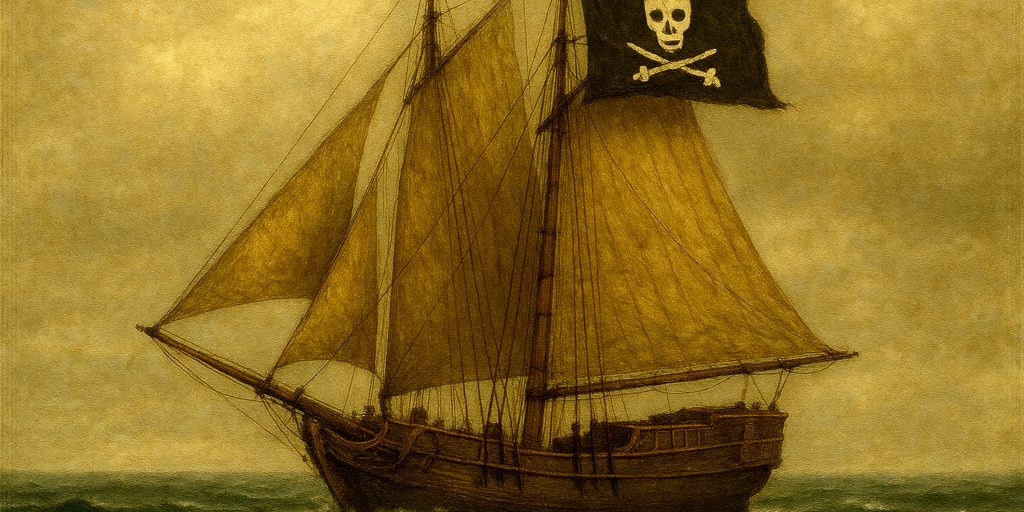
Captain: Stede Bonnet (the Gentleman Pirate)
Origin: Purpose-built in Barbados, 1717
Type: Sloop
Guns: 10–12
Unlike most pirates, Stede Bonnet was a wealthy landowner who simply got bored. He bought his own ship, named it Revenge, and set off to sea despite having no experience whatsoever.
He soon teamed up with Blackbeard, who found the gentleman amusing if entirely useless at naval command. Their partnership was short-lived but notorious.
Battle & Fate: Bonnet was captured after the Battle of Cape Fear River in 1718. The Revenge was taken as a prize, and Bonnet was later hanged in Charleston. His final words? Reportedly a polite apology to the court for wasting its time.
7. Adventure Prize
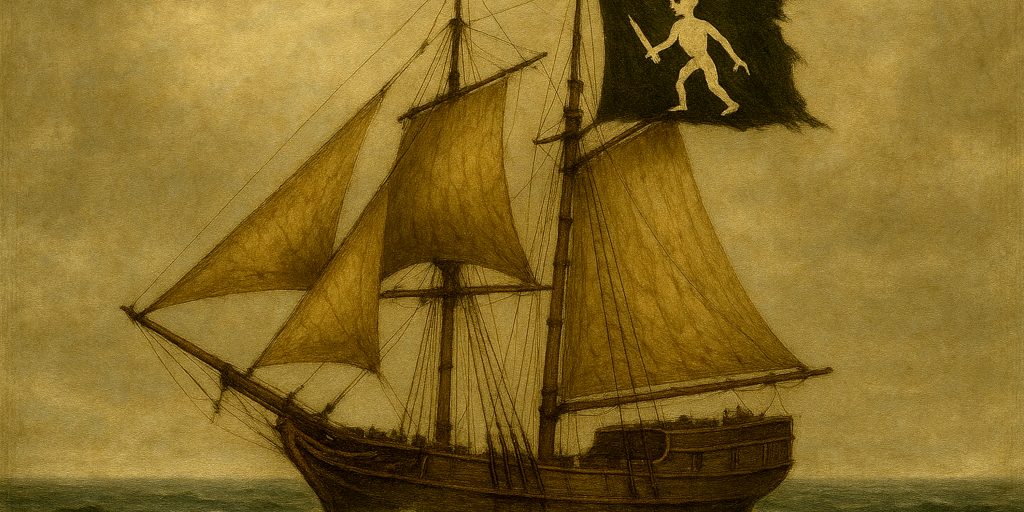
Captain: Edward Low
Origin: Captured brigantine
Type: Brigantine
Guns: 12
Edward Low was the kind of pirate even other pirates avoided. His ship, the Adventure Prize, was small but fast, perfectly suited for his brand of brutality.
Witnesses described his crew as “hellhounds,” notorious for mutilating prisoners. The ship prowled the Caribbean and Azores through the early 1720s before Low vanished, possibly captured, possibly marooned.
Battle & Fate: The Adventure Prize likely sank or was captured. Few mourned it.
8. Happy Delivery
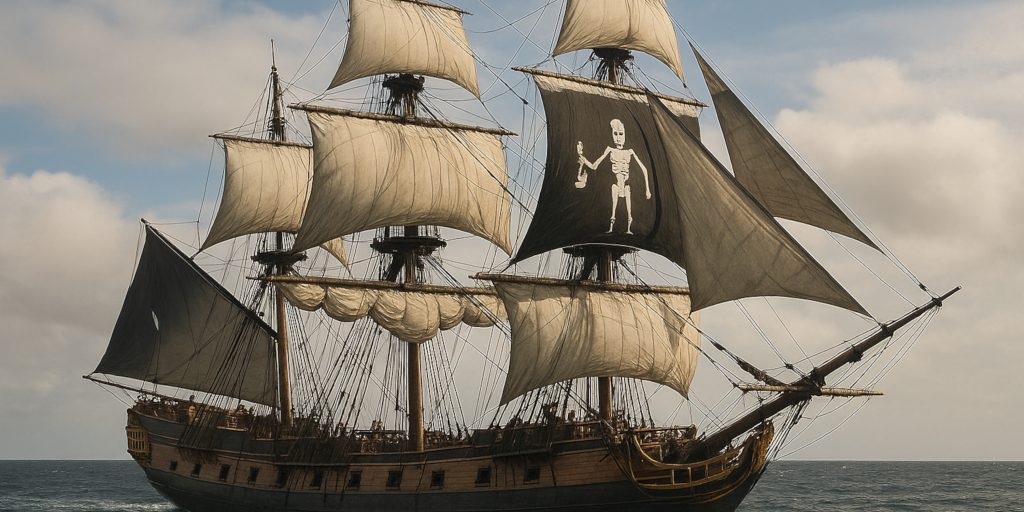
Captain: Christopher Condent (Billy One-Hand)
Origin: French merchant ship
Type: Frigate
Guns: 26
Condent was a capable sailor with a temper. After killing a mutinous crewman, he took control of the Happy Delivery and began raiding the Atlantic and Indian Ocean. He gained a reputation for both skill and savagery.
Battle & Fate: Condent captured several Portuguese and Dutch ships before negotiating a pardon with the French governor of Réunion. He retired comfortably, a rare feat for a pirate, and the Happy Delivery’s ultimate fate remains uncertain.
Pirate Ship Weapons and Tactics
Pirate vessels varied widely, but most shared similar tools of trade:
| Weapon Type | Description | Typical Use |
|---|---|---|
| Cannons | Iron or bronze guns, often salvaged | To cripple merchant ships before boarding |
| Swivel guns | Small rail-mounted weapons | Anti-personnel, used in close combat |
| Cutlasses | Short, curved swords | Ideal for boarding actions |
| Pistols | Flintlocks, often carried in pairs | Quick, close-range weapons |
| Grenades | Glass or clay filled with powder | Thrown into enemy decks to cause chaos |
Speed, surprise, and fear were a pirate’s greatest allies. A fast sloop could chase down merchants; a heavily armed frigate could fight the navy, briefly.
Legacy and Lore
Many of these ships now lie beneath tropical waters, but their reputations still sail on. Wrecks like the Whydah Gally and Queen Anne’s Revenge have yielded artefacts, pistols, and even surgical tools, showing that pirates were not just marauders, they were seafaring communities, brutal yet oddly democratic.
In the words of one captured sailor in 1720: “They live by the law of their own making, and though villains all, they are free men still.”
The Seven Swords Takeaway
The pirate ship remains the ultimate symbol of rebellion at sea. Each vessel told a story, of courage, greed, desperation, and the pursuit of freedom beyond the reach of kings. From Blackbeard’s floating fortress to Bonnet’s ill-fated folly, these ships were more than timber and canvas. They were the beating hearts of legends that refused to sink.
Watch the documentary:

